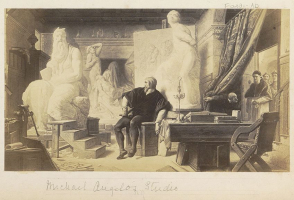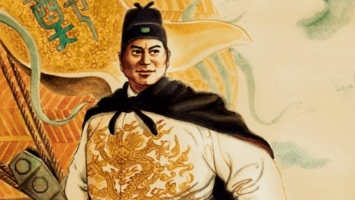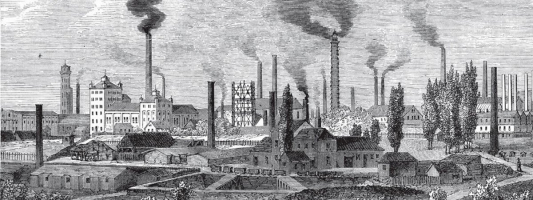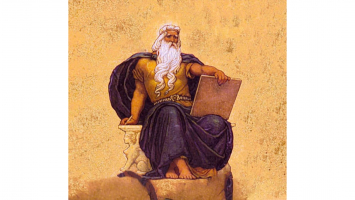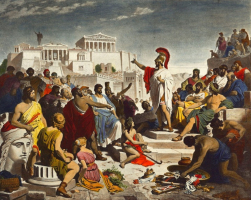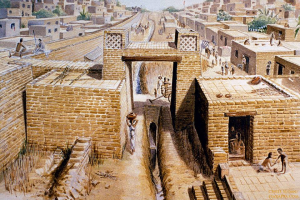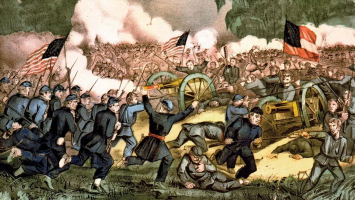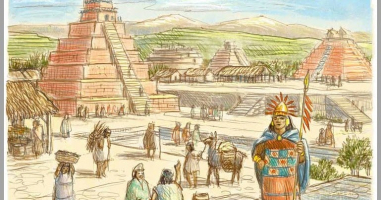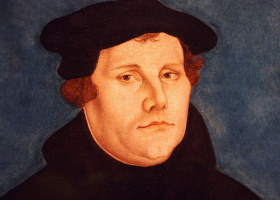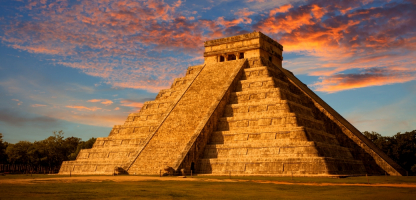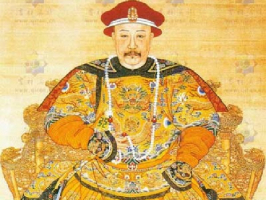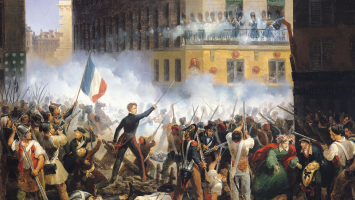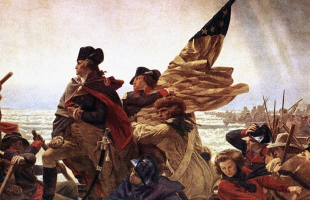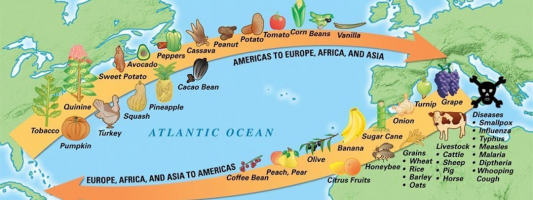Top 8 Interesting Facts About The Harlem Renaissance
During the 1920s and 1930s, the Harlem Renaissance was a cultural and intellectual renaissance of African American music, dance, art, fashion, literature, ... read more...drama, politics, and scholarship centered in Harlem, Manhattan, New York City. It was known as the "New Negro Movement" at the time, after Alain Locke's 1925 anthology The New Negro. The movement also included new African American cultural expressions in urban areas across the Northeast and Midwest of the United States, which were affected by renewed militancy in the general struggle for civil rights, as well as the Great Migration of African American workers fleeing the Jim Crow Deep South, with Harlem serving as the final destination for the majority of those who migrated north. Here are the 8 interesting facts about the Harlem Renaissance.
-
The first one in our list of interesting facts about the Harlem Renaissance is that the Great Migration of African Americans was a contributing factor to the Harlem Renaissance. Between 1910 and 1970, the Great Migration, also known as the Great Northward Migration or the Black Migration, was the movement of six million African Americans from the rural Southern United States to the urban Northeast, Midwest, and West. It was mostly driven by terrible economic conditions for African Americans, as well as widespread racial segregation and discrimination in Southern states where Jim Crow laws were enforced. A section of the migrants was driven, in particular, by the continuation of lynchings, as African Americans sought social relief.
The historic change brought about by migration was heightened because the migrants, for the most part, relocated to the country's largest cities (New York City, Chicago, Detroit, Los Angeles, Philadelphia, Pittsburgh, Cleveland, Baltimore, and Washington, D.C.) at a time when those cities wielded significant cultural, social, political, and economic clout. As a result of housing issues, many Black inhabitants ended up establishing their own cities within large cities, supporting the development of a new urban, African American culture. The most visible example was Harlem in New York City, a historically all-white neighborhood that contained over 200,000 African Americans by the 1920s. African Americans created their own powerful communities there. The Black experience during the Great Migration became a major issue in the artistic movement known as the New Negro Movement, and later as the Harlem Renaissance, which had a huge impact on the culture of the time. The Great Migration also marked the beginning of a new age of increased political activism among African Americans, who, after being disenfranchised in the South, found a new role in public life in cities.
From 1780 to 1910, more than 90% of the African-American population lived in the American South, with the majority of the population concentrated in three Southern states: Louisiana (until around 1890), South Carolina (until the 1920s), and Mississippi (until the 1930s). By the end of the Great Migration, however, slightly more than half of the African-American population resided in the South, while slightly less than half resided in the North and West. Furthermore, the African-American community had grown heavily urbanized. Only one-fifth of African Americans in the South lived in cities in 1900. By 1960, half of African Americans in the South were living in cities, and by 1970, more than 80% of African Americans nationwide were living in cities.
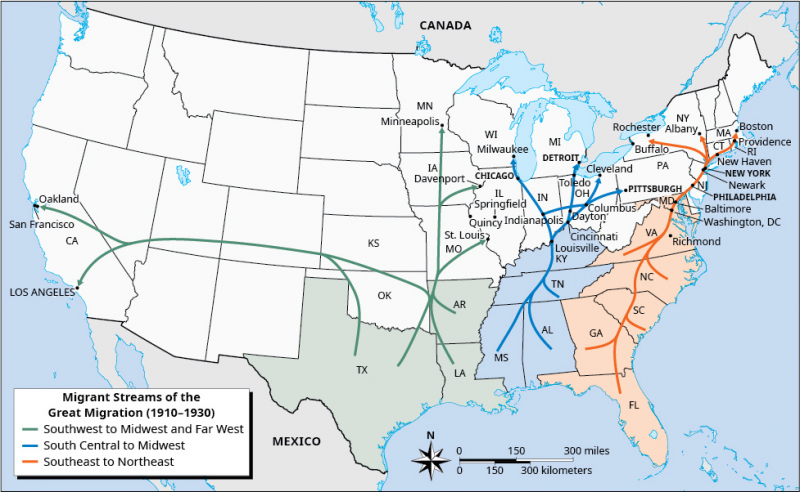
billofrightsinstitute.org 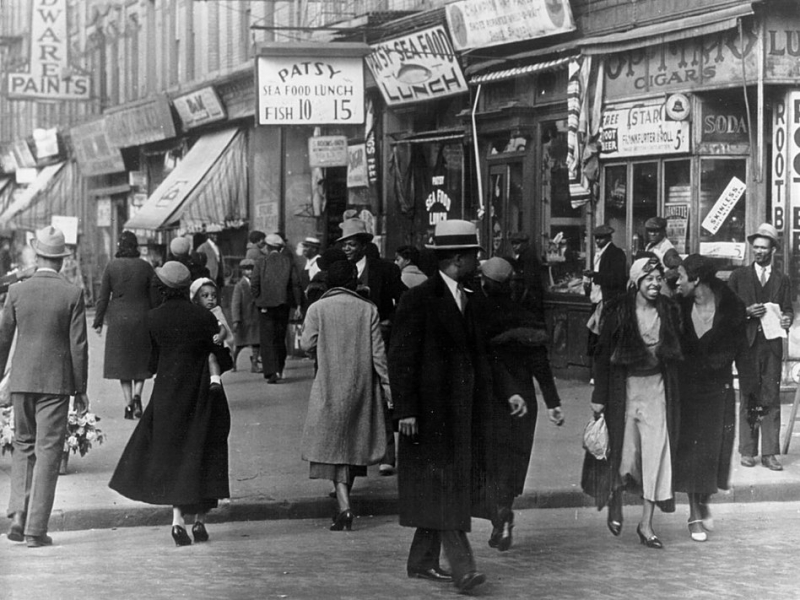
wbur.org -
Harlem, New York was the center of the Renaissance. Harlem is a neighborhood in New York City's Upper Manhattan. It is roughly limited on the west by the Hudson River, on the north by the Harlem River and 155th Street, on the east by Fifth Avenue, and on the south by Central Park North. The broader Harlem area spans west to the Hudson River, north to 155th Street, east to the East River, and south to Martin Luther King Jr. Boulevard, Central Park, and East 96th Street.
It was once a Dutch village that was initially constituted in 1658 and is named after the Dutch city of Haarlem. Harlem's history has been characterized by a series of economic boom-and-bust cycles, each with considerable demographic shifts. In the nineteenth century, Harlem was mostly occupied by Jewish and Italian Americans, but African-American people began to arrive in huge numbers during the Great Migration in the twentieth century. Central and West Harlem were the epicenters of the Harlem Renaissance, a major African-American cultural movement, in the 1920s and 1930s.
Prior to the arrival of European settlers, the area that would become Harlem (originally Haarlem) was inhabited by a Native American band, the Wecquaesgeek, dubbed Manhattans or Manhattoe by Dutch settlers, who occupied the area on a semi-nomadic basis with other Native Americans, most likely Lenape. The Harlem flatlands were farmed by hundreds of people. A few towns were created between 1637 and 1639. Under the leadership of Peter Stuyvesant, Harlem was formally incorporated in 1660.
Beginning around the end of World War I, Harlem became connected with the New Negro movement, and then with the Harlem Renaissance, a cultural outpouring that included poetry, novels, drama, and the visual arts. There were so many black people that it "threatens the very viability of parts of Georgia, Florida, Tennessee, and Alabama's key industries." Many of them settled in Harlem. Central Harlem was 32.43 percent black by 1920. According to the 1930 census, 70.18 percent of central Harlem's people were black and lived as far south as Central Park, on 110th Street.
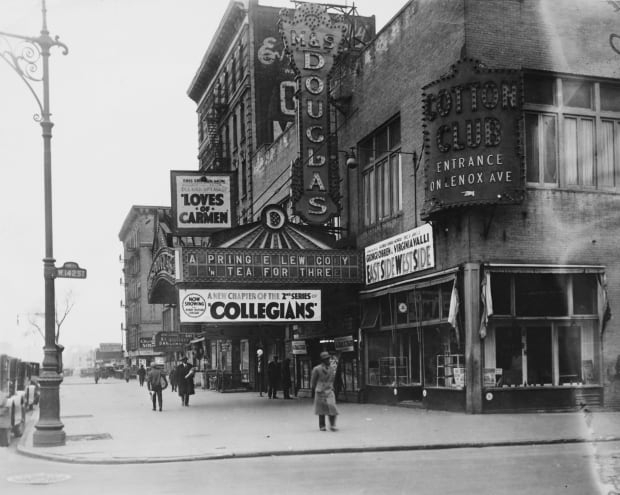
history.com 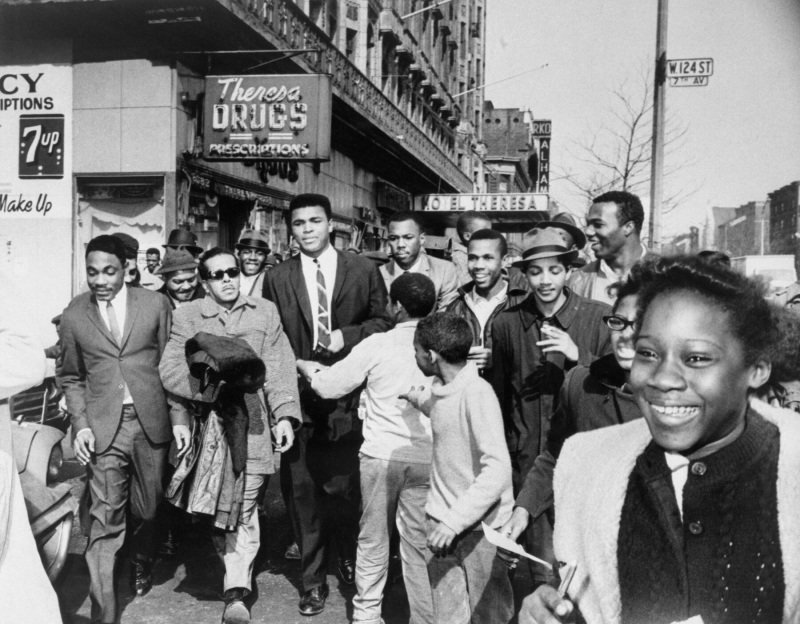
nytimes.com -
One of the interesting facts about the Harlem Renaissance is that Harlem was initially a place for a wealthy white community. During the American Civil War, Harlem, like the rest of the city, had draft riots, but the area benefited greatly from the economic boom that followed the war's end in 1868. The neighborhood remained a haven for New Yorkers, but those heading north were increasingly poor, Jewish, or Italian. Factories, houses, churches, and retail buildings were constructed at breakneck speed. The Panic of 1873 reduced Harlem property prices by 80%, allowing the City of New York to annex the problematic neighborhood as far north as 155th Street.
Early entrepreneurs had high plans for Harlem: Polo was played at the original Polo Grounds, which subsequently became the home of the New York Giants baseball team. Hammerstein, Oscar In 1889, I opened the Harlem Opera House on East 125th Street. Even row houses were insufficient to service the rising population by 1893, and large-scale apartment structures were the norm. According to Harlem Monthly Magazine, "it is obvious to the most casual observer that the center of fashion, money, culture, and intelligence must, in the near future, be found in the venerable and dignified hamlet of Harlem".
However, in the same year, a construction glut and a delay in the subway's construction caused a drop in real estate prices, attracting an influx of Eastern European Jews and Italians to Harlem. In 1869, there were 12 Jews in Harlem; by 1915, the population had risen to about 200,000. Existing landowners attempted to prevent Jews from coming into the neighborhood in order to demonstrate their opposition to the advent of blacks. At least one rental sign read, "No Jews and No Dogs" (No Jews and no dogs). Italians arrived in Harlem just a few years after the Jews. By 1900, Harlem had 150,000 Italians. Both groups concentrated their efforts in East Harlem.
However, by the 1930s, the area had been severely impacted by employment losses as a result of the Great Depression. In the early 1930s, 25% of Harlemites were unemployed, and employment prospects for Harlemites remained bleak for decades. Employment among black New Yorkers has decreased as other ethnic groups have taken over some traditionally black enterprises, such as domestic service and various sorts of physical labor. Major companies abandoned New York City entirely, particularly after 1950. Several riots occurred during this time period, notably those in 1935 and 1943.
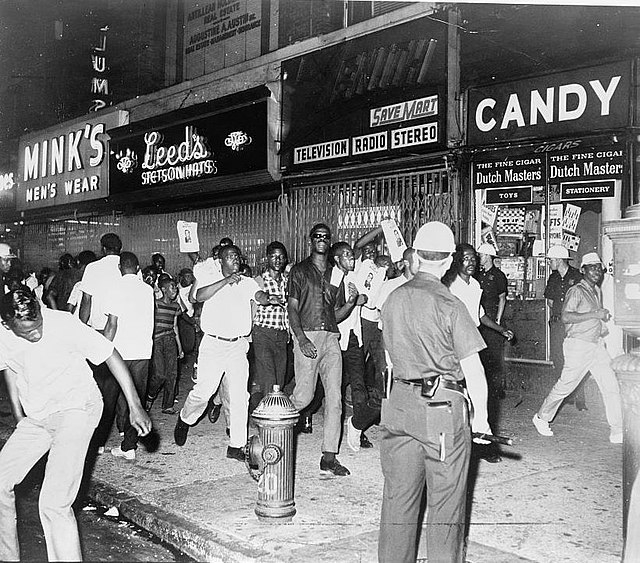
en.wikipedia.org 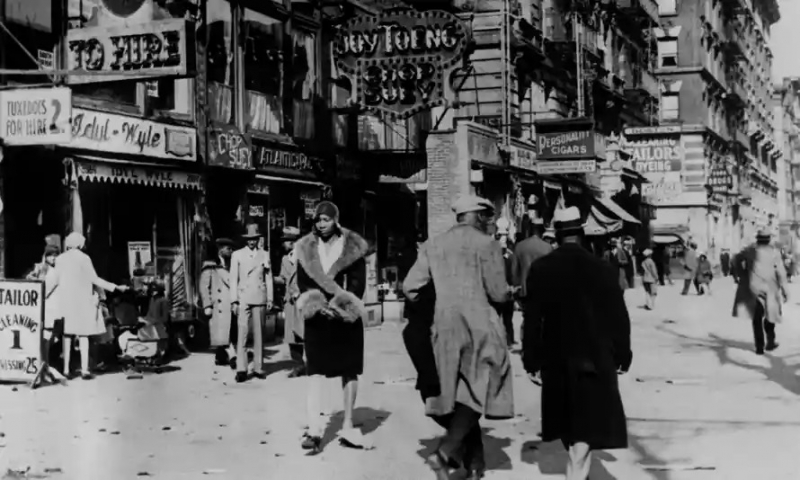
boweryboyshistory.com -
World War I and the South's dwindling economies partly contributed to the Harlem Renaissance. During World War I, there was a decrease in European immigrants, causing Northern firms to suffer from a labor shortage. In 1914, around 1.2 million European immigrants arrived, whereas just 300,000 arrived the following year. Enlistment of workers in the military has also had an impact on the labor supply. As the Northern industry sought a new labor supply in the South, this presented a wartime opportunity for African Americans in the North.
Northern jobs had several advantages over Southern jobs, including pay that may be double or more. Sharecropping, agricultural downturn, extensive boll weevil infestation, and flooding were all reasons for African Americans to relocate to the Northern Cities. African Americans were also pushed to travel northward by a lack of political power, representation, and social possibilities as a result of a society governed by Jim Crow laws.
During the early twentieth century, Harlem was a popular destination for migrants from all over the country, attracting both those from the South looking for work and an educated class who helped to make the neighborhood a cultural center, as well as a burgeoning "Negro" middle class. These people were searching for a new beginning in their lives, and here was an excellent place to start. The district was founded in the nineteenth century as an elite suburb for the white middle and upper-middle classes; its prosperous beginnings resulted in the construction of stately homes, wide streets, and world-class attractions such as the Polo Grounds and the Harlem Opera House. The once prestigious district was abandoned by the white middle class, who migrated further north during the massive inflow of European immigrants in the late nineteenth century.
In the early 1900s, Harlem became an African-American community. A big block along 135th Street and Fifth Avenue was purchased in 1910 by a group of African-American realtors and a church group. During the First World War, many more African Americans arrived. Because of the war, labor migration from Europe almost ended, while the war effort created a large demand for unskilled industrial labor. Hundreds of thousands of African Americans arrived in cities such as Chicago, Philadelphia, Detroit, and New York during the Great Migration.
Despite the growing popularity of African-American culture, intense white racism, frequently perpetrated by more recent ethnic immigrants, continued to afflict African-American communities, even in the North. Following the end of World War I, many African-American troops, who served in segregated units such as the Harlem Hellfighters, returned home to a country whose citizenry did not always accept their achievements. Throughout the United States during the Red Summer of 1919, race riots and other civil upheavals erupted, reflecting the economic struggle for jobs and housing in many cities, as well as conflicts over social territories.
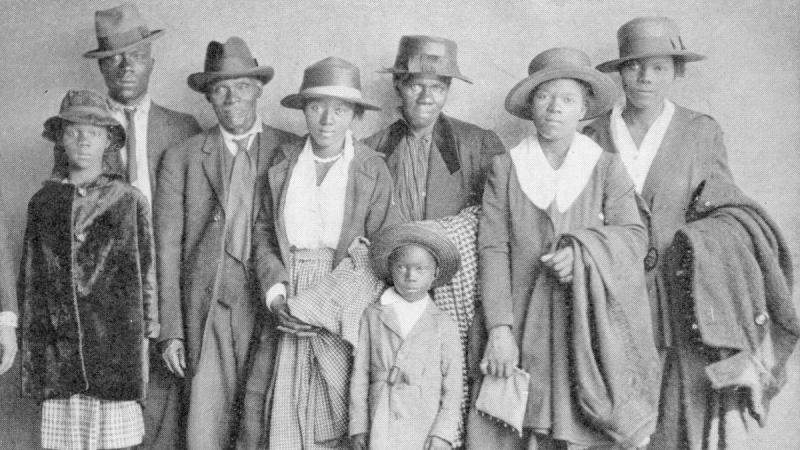
history.com 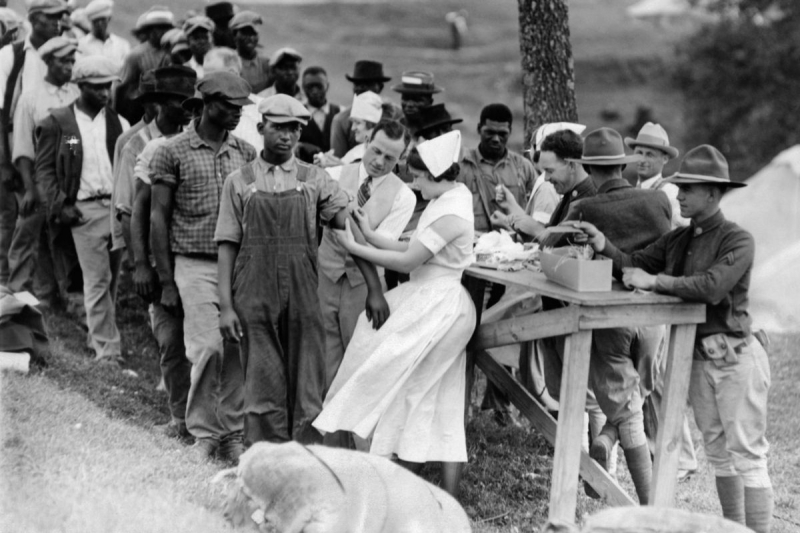
vox.com -
One of the interesting facts about the Harlem Renaissance is that the Harlem Renaissance didn't take too long to spread. The Harlem Renaissance's initial stage began in the late 1910s. Granny Maumee, The Rider of Dreams, and Simon the Cyrenian: Plays for a Negro Theater were all staged in 1917. Ridgely Torrence, a white playwright, wrote these plays, which featured African-American actors expressing profound human emotions and yearnings. They were against the stereotypes of blackface and minstrel shows. The premieres of these plays were dubbed "the most important single event in the entire history of the Negro in the American Theater" by James Weldon Johnson in 1917.
Another watershed moment occurred in 1919 when communist poet Claude McKay published his militant sonnet "If We Must Die", which added a dramatically political dimension to the themes of African cultural inheritance and modern urban experience that had been featured in his 1917 poems "Invocation" and "Harlem Dancer". These were his first appearances in print in the United States after coming from Jamaica, using the pen name Eli Edwards. Although "If We Must Die" made no mention of race, African-American readers perceived it as a statement of resistance in the face of prejudice and the statewide race riots and lynchings that were taking place at the time. By the end of World War I, James Weldon Johnson's fiction and Claude McKay's poetry were depicting the reality of current African-American life in America.
The Harlem Renaissance arose from the changes that had occurred in the African-American community after slavery's abolition, such as the development of communities in the North. These were accelerated as a result of World War I and the significant social and cultural developments in the early twentieth-century United States. People from rural areas were drawn to cities by industrialization, which gave rise to new mass culture. The Great Migration of African Americans to northern cities, which concentrated ambitious people in places where they could support one other, and the First World War, which brought new industrial labor opportunities for tens of thousands of people, both contributed to the Harlem Renaissance.
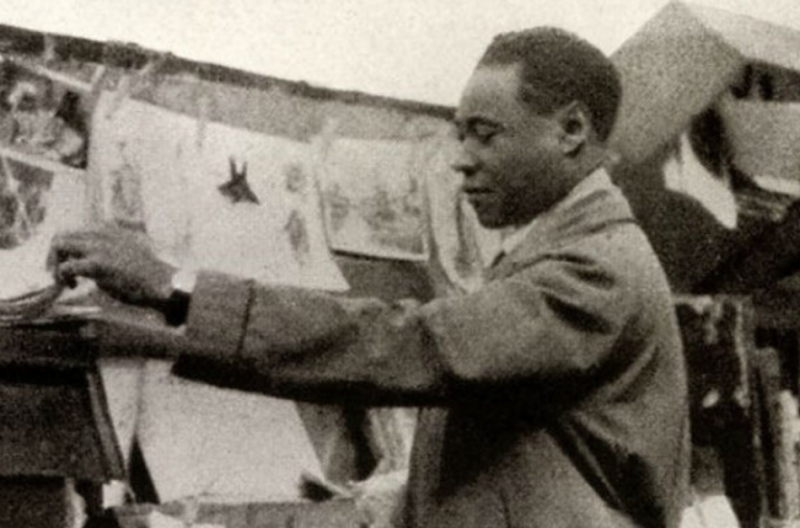
repeatingislands.com 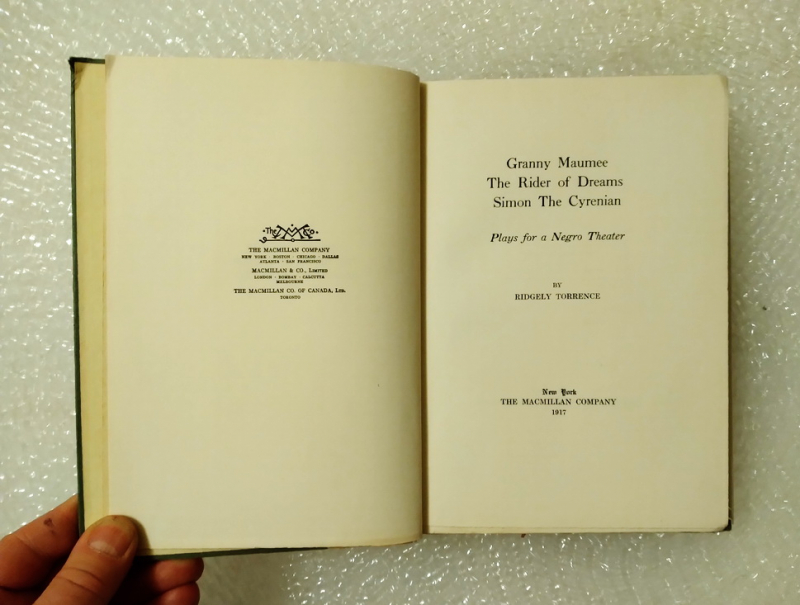
abebooks.com -
Another interesting fact is that the New Negro Movement was another name for the Harlem Renaissance. Hubert Harrison (1883-1927) was a pivotal figure in early twentieth-century America. A great writer, orator, educator, critic, and political activist, he was regarded as "probably the foremost Aframerican mind of his day" by historian Joel A. Rogers in "World's Great Men of Color." A. Philip Randolph, a labor and civil rights leader, referred to Harrison as "the father of Harlem Radicalism."
He created the Liberty League and The Voice in 1917, the first organization and publication of the "New Negro Movement". Harrison's organization and journal were both political in nature, but they also stressed the arts (his newspaper had "Poetry for the People" and book review sections). Harrison disputed the notion of the Renaissance in the Pittsburgh Courier in 1927. He contended that the concept of the "Negro Literary Renaissance" ignored "the stream of literary and aesthetic output that had flowed uninterruptedly from Negro writers from 1850 to the present," and that the so-called "renaissance" was mostly a white invention. Alternatively, Fenton Johnson, a Chicago-based novelist who began writing in the early 1900s, is seen as a "forerunner" of the Renaissance, one of the earliest black revolutionary poets.
Nonetheless, the Harlem Renaissance gave African-American writers a sense of acceptance; as Langston Hughes phrased it, Harlem gave us the courage "to express our own dark-skinned selves without fear or shame." The New Negro, an anthology edited by Alain Locke, was seen as the cultural revolution's cornerstone. The anthology included works by various African-American writers and poets, including Zora Neale Hurston and communists Langston Hughes and Claude McKay, as well as lesser-known poet Anne Spencer. Many Harlem Renaissance poets were inspired to include elements of African-American culture in their work, and as a result, jazz poetry flourished during this period. Langston Hughes wrote the famous jazz poem "The Weary Blues." Black authors were able to offer a voice to the African-American identity through their works of literature, as well as strive for a community of support and acceptance.
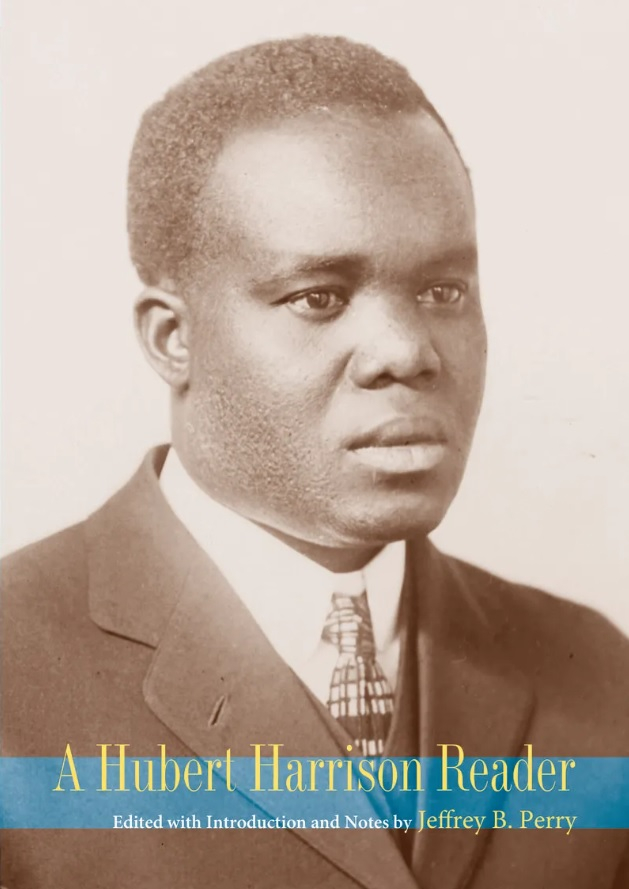
scribd.com 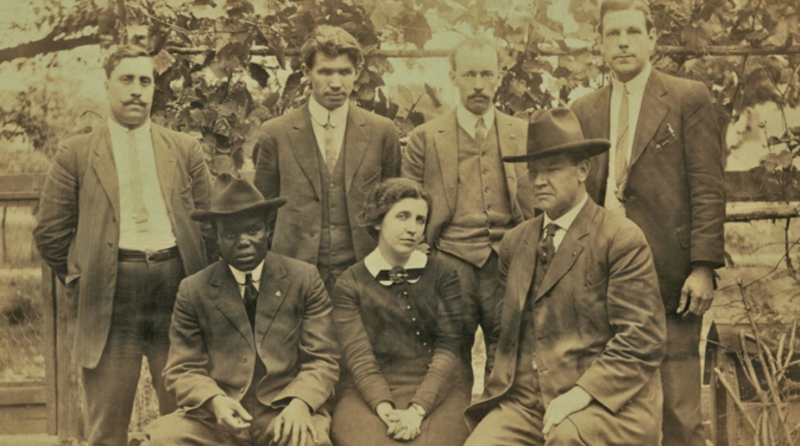
loveandragemedia.org -
The Harlem Renaissance was successful in that it firmly established the Black experience within the context of American cultural history. The Harlem Renaissance created a new Black identity. The impact of the Harlem Renaissance transformed how America and the world regarded African Americans not only via an explosion of culture but also on a sociological level. The migration of southern Blacks to the north transformed African Americans' image from rural, uneducated peasants to urban, cosmopolitan sophistication. This new identity led to increased social consciousness, and African Americans became global players, expanding intellectual and social ties on a global scale.
During this period, the African-American community developed a spirit of self-determination that created a rising feeling of both Black urbanity and Black militancy, as well as a basis for the community to build upon for the Civil Rights movements in the 1950s and 1960s.
The rapidly rising metropolitan setting of Harlem provided a place for African Americans of all backgrounds to appreciate the diversity of Black life and culture. The Harlem Renaissance developed a fresh understanding of folk roots and culture through this manifestation. Folk materials and spirituals, for example, were a rich source of artistic and intellectual imagination, freeing Blacks from the establishment of past conditions. Through participation in these cultural events, a consciousness arose in the shape of a shared racial identity.
However, there was also pressure among certain Harlem Renaissance groups to adopt traditional white American ideas in order to be taken seriously by the mainstream. As a result, while LGBT culture was significantly more tolerated in Harlem than in most other parts of the country at the time, it was almost completely lived out in the city's smoky black lights of bars, nightclubs, and cabarets. The blues music movement flourished in these places, and because it had not yet received notoriety in popular culture, queer musicians used it to express themselves honestly.
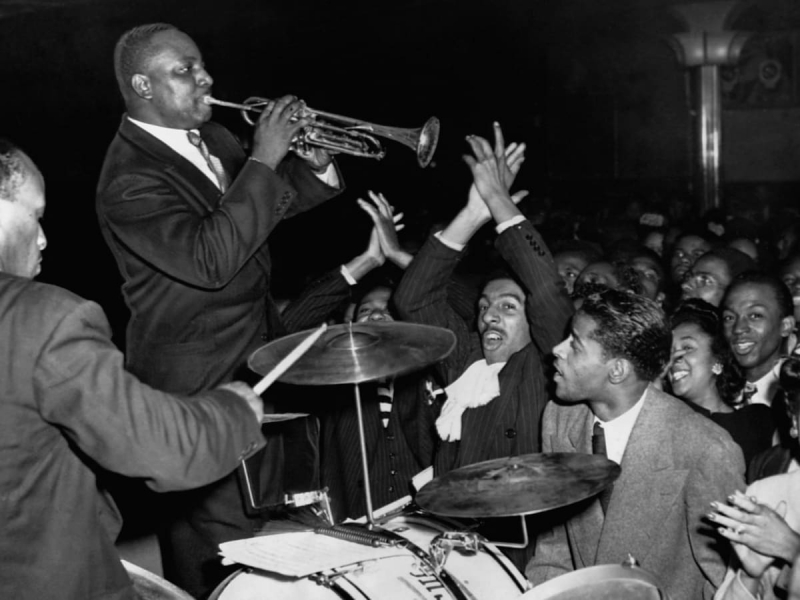
history.com 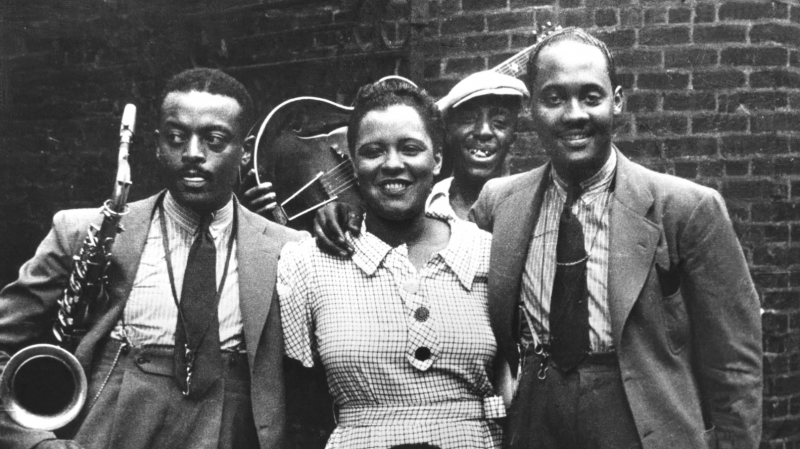
nationalbluesmuseum.org -
Everyone agrees that the beginning of the Great Depression hampered the progress of the Harlem Renaissance. It was a time of economic slump that brought widespread hardship and misery for millions of Americans.
The Great Crisis was a severe worldwide economic depression that lasted from 1929 to 1939 and was precipitated by a significant drop in stock values in the United States. The economic contagion began about September 4, 1929, and became widely recognized on Black Tuesday, the October 29, 1929 stock market catastrophe. The economic shock spread over the world, affecting countries to varying degrees, with the majority of countries experiencing the Great Depression beginning in 1929.
The Great Depression was the twentieth century's longest, deepest, and most extensive crisis, and it is frequently cited as an example of a severe worldwide economic depression.
Cities all throughout the world were heavily damaged, particularly those reliant on heavy industry. Many countries have effectively suspended construction. Crop prices plunged by almost 60%, wreaking havoc on farming towns and rural areas. Areas reliant on primary sector sectors suffered the most as demand fell and job opportunities became scarce.
Economic historians generally believe that the Great Depression was precipitated by the rapid and devastating drop in US stock market prices beginning on October 24, 1929. However, some argue that the stock market crash was a symptom, not a cause, of the Great Depression.
The Great Depression lasted roughly from 1929 to 1941 when the need for war-related materials and supplies produced jobs and boosted the economy significantly. Throughout the 1920s, the U.S. economy was weakened by a number of factors, including many Americans' tendency to spend more money than they earned and rely on credit to buy what they wanted; an uneven distribution of wealth that concentrated the majority of profits earned by large corporations in the hands of a small percentage of the population; and unwise lending practices by American banks.
The African American community in Harlem was devastated by the Great Depression. In only three years, median family income fell from $1,808 in 1929 to $1,019 in 1932, a 43.6 percent decline. Nonetheless, as migrants continued to flow into Harlem, rents remained high. Despite the fact that the number of black professionals increased by 69 percent between 1920 and 1930 (according to Fisk University sociologist Charles S. Johnson's research), those who came of age in the 1930s faced a dismal future as black banks and enterprises failed and educational funds ran out.
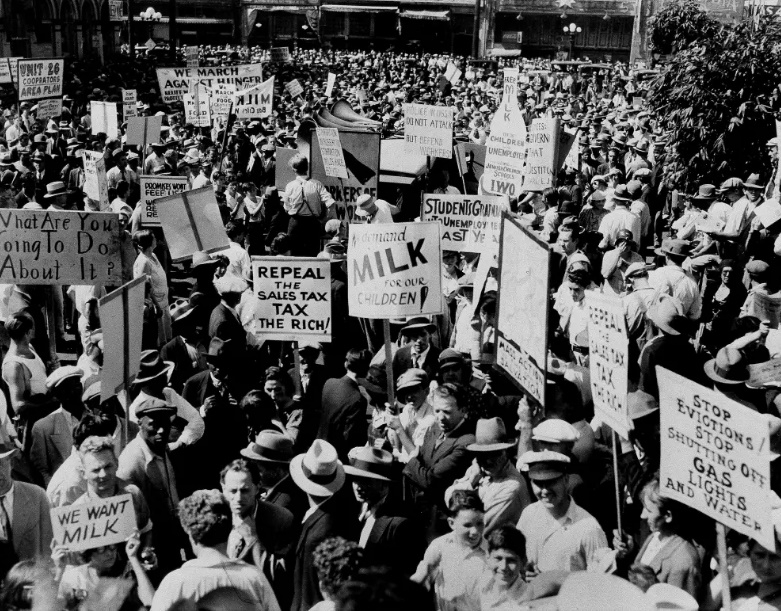
insider.com 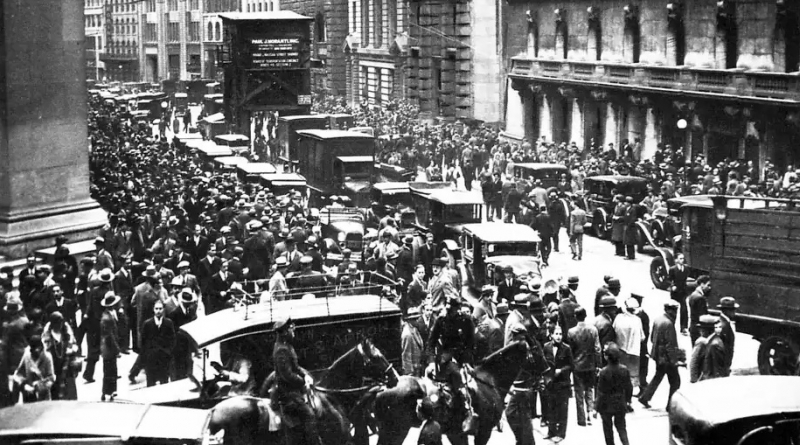
cnbc.com










